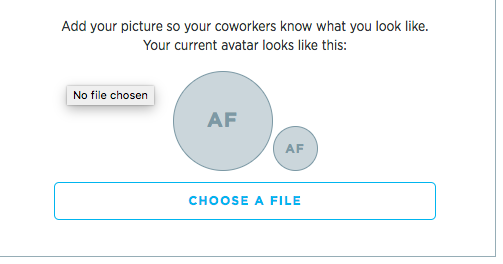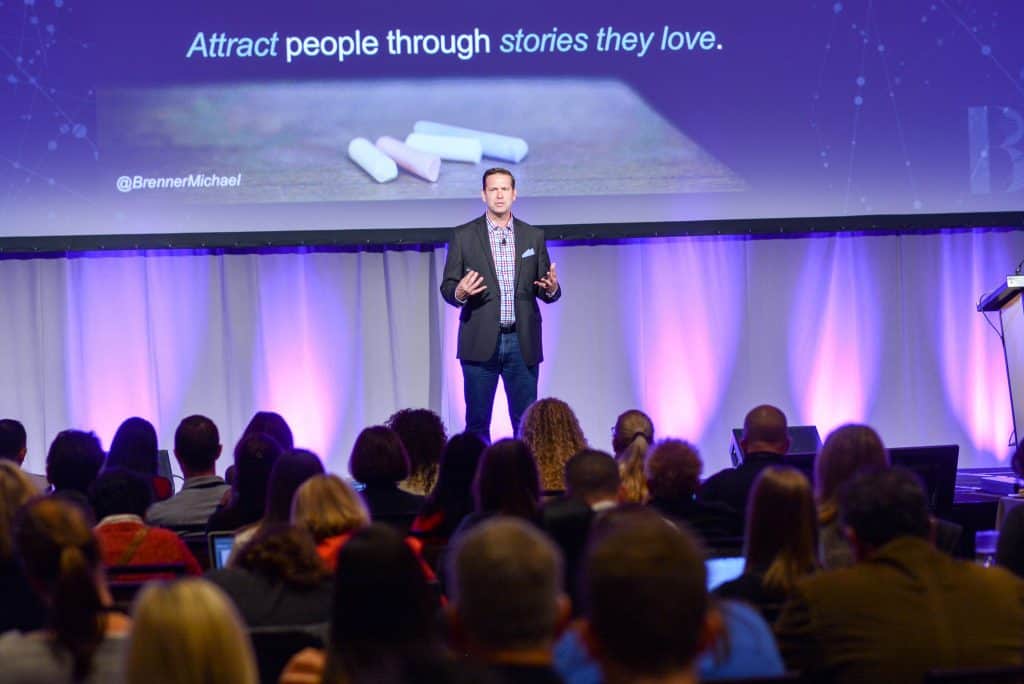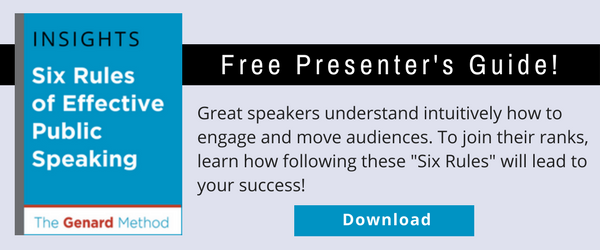

Good Speech | Bad Speech
- June 3, 1990
- Charles Lawrence ,
- Gerald Gunther
- Spring 1990 – Issue 42
- Cover Story
- Share on Twitter
- Share on Facebook
- Share by Email
One person’s freedom of expression may be another’s verbal assault-a dilemma with First Amendment implications. Constitutional law experts Charles Lawrence and Gerald Gunther explore this in the following essays. Note that while the two professors take differing stands, both speak from experience as victims of the kind of “bad speech” at issue. Their arguments were initially framed in the context of an ongoing debate at Stanford University over whether and how the Fundamental Standard for student conduct should be amended. Several other Law School faculty members-including Dean Brest and Professors William Cohen, Thomas Grey, and Robert Rabin-have also contributed to the campus deliberations.

I have, however, a deeply felt apprehension about the resurgence of racial violence and the corresponding increase in the incidence of verbal and symbolic assault and harassment to which blacks and other traditionally excluded groups are subjected. I am troubled by the way the debate has been framed in response to the recent surge of racist incidents on college and university campuses and in response to some universities’ attempts to regulate harassing speech. The problem has been framed as one in which the liberty of free speech is in conflict with the elimination of racism. I believe this has placed the bigot on the moral high ground and fanned the rising flames of racism.
Above all, I am troubled that we have not listened to the real victims – that we have shown so little understanding of their injury, and that we have abandoned those whose race, gender, or sexual orientation continues to make them second-class citizens. It seems to me a very sad irony that the first instinct of civil libertarians has been to challenge even the smallest, most narrowly framed efforts by universities to provide black and other minority students with the protection the Constitution, in my opinion, guarantees them.
The landmark case of Brown v. Board of Education is not a case that we normally think of as a case about speech. But Brown can be broadly read as articulating the principle of equal citizenship. Brown held that segregated schools were inherently unequal because of the message that segregation conveyed: that black children were an untouchable caste, unfit to go to school with white children. If we understand the necessity of eliminating the system of signs and symbols that signal the inferiority of blacks, then we should hesitate before proclaiming that all racist speech that stops short of physical violence must be defended.
University officials who have formulated policies to respond to incidents of racial harassment have been characterized in the press as “thought police,” even though such policies generally do nothing more than impose sanctions against intentional face-to-face insults. Racist speech that takes the form of face to- face insults, catcalls, or other assaultive speech aimed at an individual or small group of persons falls directly within the “fighting words” exception to First Amendment protection. The Supreme Court has held in Chaplinsky v. New Hampshire that words which “by their very utterance inflict injury or tend to incite an immediate breach of the peace” are not protected by the First Amendment.
If the purpose of the First Amendment is to foster the greatest amount of speech, racial insults deserve that purpose. Assaultive racist speech functions as a preemptive strike. The invective is experienced as a blow, not as a proffered idea. And once the blow is struck, a dialogue is unlikely to follow. Racial insults are particularly undeserving of First Amendment protection, because the perpetrator’s intention is not to discover truth or initiate dialogue but to injure the victim. In most situations, members of minority groups realize that they are likely to lose if they fight back, and are forced to remain silent and submissive.
Courts have held that offensive speech may not be regulated in public forums (such as streets, where the listener may avoid the speech by moving on). But the regulation of otherwise protected speech has been permitted when the speech invades the privacy of the unwilling listener’s home, or when the unwilling listener cannot avoid the speech. Racist posters, fliers, and graffiti in dormitories, bathrooms, and other common living spaces would seem to fall within the reasoning of these cases. Minority students should not be required to remain in their rooms in order to avoid racial insult. Minimally, they should find a safe haven in their dorms and in all other common rooms that are a part of their daily routine.
I would also argue that the university’s responsibility for ensuring that these students receive an equal educational opportunity provides a compelling justification for regulations that ensure them safe passage in all common areas. A minority student should not have to risk becoming the target of racially assaulting speech every time he or she chooses to walk across campus. Regulating vilifying speech that cannot be anticipated or avoided need not preclude announced speeches and rallies – situations that would give minority-group members and their allies the opportunity to organize counter-demonstrations or avoid the speech altogether.
The most commonly advanced argument against the regulation of racist speech proceeds something like this: We recognize that minority groups suffer pain and injury as the result of racist speech, but we must allow this hate mongering for the benefit of society as a whole. Freedom of speech is the lifeblood of our democratic system. It is especially important for minorities, because often it is their only vehicle for rallying support for the redress of their grievances. It will be impossible to formulate a prohibition so precise that it will prevent the racist speech you want to suppress, without catching in the same net all kinds of speech that it would be unconscionable for a democratic society to suppress.
Such arguments seek to strike a balance between our concern, on the one hand, for the continued free flow of ideas and the democratic process dependent on that flow, and, on the other, our desire to further the cause of equality. There can, however, be no meaningful discussion of how we should reconcile our commitment to equality with our commitment to free speech, until it is acknowledged that racist speech inflicts real harm, and that this harm is far from trivial.
To engage in a debate about the First Amendment and racist speech without a full understanding of the nature and extent of that harm is to risk making the First Amendment an instrument of domination rather than a vehicle of liberation. We have not all known the experience of victimization by racist, misogynist, and homophobic speech, nor do we equally share the burden of the harm it inflicts. We are often quick to say that we have heard the cry of the victims when we have not.
The Brown case is again instructive, because it speaks directly to the psychic injury inflicted by racist speech by noting that the symbolic message of segregation affected “the hearts and minds” of Negro children “in a way unlikely ever to be undone.” Racial epithets and harassment often cause deep emotional scarring and feelings of anxiety and fear that pervade every aspect of a victim’s life.
Brown also recognized that black children did not have an equal opportunity to learn and participate in the school community when they bore the additional burden of being subjected to the humiliation and psychic assault contained in the message of segregation. University students bear an analogous burden when they are forced to live and work in an environment where at any moment they may be subjected to denigrating verbal harassment and assault. The same injury was addressed by the Supreme Court when it held that, under Title VII of the Civil Rights Act of 1964, sexual harassment which creates a hostile or abusive work environment violates the ban on sex discrimination in employment.
Carefully drafted university regulations could bar the use of words as assault weapons while at the same time leaving unregulated even the most heinous of ideas provided those ideas are presented at times and places and in manners that provide an opportunity for reasoned rebuttal or escape from immediate insult. The history of the development of the right to free speech has been one of carefully evaluating the importance of free expression and its effects on other important societal interests. We have drawn the line between protected and unprotected speech before without dire results. (Courts have, for example, exempted from the protection of the First Amendment obscene speech and speech that disseminates official secrets, defames or libels another person, or is used to form a conspiracy or monopoly.)
Blacks and other people of color are skeptical about the argument that even the most injurious speech must remain unregulated because, in an unregulated marketplace of ideas, the best ones will rise to the top and gain acceptance. Experience tells quite the opposite. People of color have seen too many demagogues elected by appealing to America’s racism, and too many sympathetic politicians shy away from issues that might brand them as being too closely allied with disparaged groups.
Whenever we decide that racist speech must be tolerated because of the importance of maintaining societal tolerance for all unpopular speech, we are asking blacks and other subordinated groups to bear the burden for the good of all. We must be careful that the ease with which we strike the balance against the regulation of racist speech is in no way influenced by the fact that the cost will be borne by others. We must be certain that those who will pay that price are fairly represented in our deliberations and that they are heard.
At the core of the argument that we should resist all government regulation of speech is the ideal that the best cure for bad speech is good-that ideas that affirm equality and the worth of all individuals will ultimately prevail. This is an empty ideal unless those of us who would fight racism are vigilant and unequivocal in that fight. We must look for ways to offer assistance and support to students whose speech and political participation are chilled in a climate of racial harassment.
Civil rights lawyers might consider suing on behalf of blacks whose right to an equal education is denied by a university’s failure to ensure a nondiscriminatory educational climate or conditions of employment. We must embark upon the development of a First Amendment jurisprudence grounded in the reality of our history and our contemporary experience. We must think hard about how best to launch legal attacks against the most indefensible forms of hate speech. Good lawyers can create exceptions and narrow interpretations that limit the harm of hate speech without opening the floodgates of censorship.
Everyone concerned with these issues must find ways to engage actively in actions that resist and counter the racist ideas that we would have the First Amendment protect. If we fail in this, the victims of hate speech must rightly assume that we are on the bigots’ side.

I am deeply troubled by current efforts – however well-intentioned -to place new limits on freedom of expression at this and other campuses. Such limits are not only incompatible with the mission and meaning of a university; they also send exactly the wrong message from academia to society as a whole. University campuses should exhibit greater, not less, freedom of expression than prevails in society at large.
Proponents of new limits argue that historic First Amendment rights must be balanced against “Stanford’s commitment to the diversity of ideas and persons.” Clearly, there is ample room and need for vigorous University action to combat racial and other discrimination. But curbing freedom of speech is the wrong way to do so. The proper answer to bad speech is usually more and better speech-not new laws, litigation, and repression.

Lest it be thought that I am insensitive to the pain imposed by expressions of racial or religious hatred, let me say that I have suffered that pain and empathize with others under similar verbal assault. My deep belief in the principles of the First Amendment arises in part from my own experiences.
I received my elementary education in a public school in a very small town in Nazi Germany. There I was subjected to vehement anti-Semitic remarks from my teacher, classmates and others- “Judensau” (Jew pig) was far from the harshest. I can assure you that they hurt.
More generally, I lived in a country where ideological orthodoxy reigned and where the opportunity for dissent was severely limited.
The lesson I have drawn from my childhood in Nazi Germany and my happier adult life in this country is the need to walk the sometimes difficult path of denouncing the bigots’ hateful ideas with all my power, yet at the same time challenging any community’s attempt to suppress hateful ideas by force of law.
Obviously, given my own experience, I do not quarrel with the claim that words can do harm. But I firmly deny that a showing of harm suffices to deny First Amendment protection, and I insist on the elementary First Amendment principle that our Constitution usually protects even offensive, harmful expression.
That is why-at the risk of being thought callous or doctrinaire – I feel compelled to speak out against the attempt by some members of the Stanford community to enlarge the area of forbidden speech under the Fundamental Standard. Such proposals, in my view, seriously undervalue the First Amendment and far too readily endanger its precious content. Limitations on free expression beyond those established by law should be eschewed in an institution committed to diversity and the First Amendment.
In explaining my position, I will avoid extensive legal arguments. Instead, I want to speak from the heart, on the basis of my own background and of my understanding of First Amendment principles-principles supported by an ever larger number of scholars and Supreme Court justices, especially since the days of the Warren Court.
Among the core principles is that any official effort to suppress expression must be viewed with the greatest skepticism and suspicion. Only in very narrow, urgent circumstances should government or similar institutions be permitted to inhibit speech. True, there are certain categories of speech that may be prohibited; but the number and scope of these categories has steadily shrunk over the last fifty years. Face-to-face insults are one such category; incitement to immediate illegal action is another. But opinions expressed in debates and arguments about a wide range of political and social issues should not be suppressed simply because of disagreement with those views, with the content of the expression.
Similarly, speech should not and cannot be banned simply because it is “offensive” to substantial parts or a majority of a community. The refusal to suppress offensive speech is one of the most difficult obligations the free speech principle imposes upon all of us; yet it is also one of the First Amendment’s greatest glories – indeed it is a central test of a community’s commitment to free speech.
The Supreme Court’s 1989 decision to allow flag-burning as a form of political protest, in Texas v. Johnson , warrants careful pondering by all those who continue to advocate campus restraints on “racist speech.” As Justice Brennan’s majority opinion in Johnson reminded, “If there is a bedrock principle underlying the First Amendment, it is that the Government may not prohibit the expression of an idea simply because society finds the idea itself offensive or disagreeable.” In refusing to place flag burning outside the First Amendment, moreover, the Johnson majority insisted (in words especially apt for the “racist speech” debate): “The First Amendment does not guarantee that other concepts virtually sacred to our Nation as a whole- such as the principle that discrimination on the basis of race is odious and destructive -will go unquestioned in the marketplace of ideas. We decline, therefore, to create for the flag an exception to the joust of principles protected by the First Amendment.” (Italics added.)
Campus proponents of restricting offensive speech are currently relying for justification on the Supreme Court’s allegedly repeated reiteration that “fighting words” constitute an exception to the First Amendment. Such an exception has indeed been recognized in a number of lower court cases. However, there has only been one case in the history of the Supreme Court in which a majority of the Justices has ever found a statement to be a punishable resort to “fighting words.” That was Chaplinsky v. New Hampshire , a nearly fifty-year-old case involving words which would very likely not be found punishable today. More significant is what has happened in the nearly half-century since: Despite repeated appeals to the Supreme Court to recognize the applicability of the “fighting words” exception by affirming challenged convictions, the Court has in every instance refused. One must wonder about the strength of an exception that, while theoretically recognized, has for so long not been found apt in practice. (Moreover, the proposed Stanford rules are not limited to face-to-face insults to an addressee, and thus go well beyond the traditional, albeit fragile, “fighting words” exception.)
The phenomenon of racist and other offensive speech that Stanford now faces is not a new one in the history of the First Amendment. In recent decades, for example, well-meaning but in my view misguided majorities have sought to suppress not only racist speech but also antiwar and antidraft speech, civil rights demonstrators, the Nazis and the Ku Klux Klan, and left-wing groups.
Typically, it is people on the extremes of the political spectrum (including those who advocate overthrow of our constitutional system and those who would not protect their opponents’ right to dissent were they the majority) who feel the brunt of repression and have found protection in the First Amendment; typically, it is well meaning people in the majority who believe that their “community standards,” their sensibilities, their sense of outrage, justify restraints.
Those in power in a community recurrently seek to repress speech they find abhorrent; and their efforts are understandable human impulses. Yet freedom of expression – and especially the protection of dissident speech, the most important function of the First Amendment-is an anti-majoritarian principle. Is it too much to hope that, especially on a university campus, a majority can be persuaded of the value of freedom of expression and of the resultant need to curb our impulses to repress dissident views?
The principles to which I appeal are not new. They have been expressed, for example, by the most distinguished Supreme Court justices ever since the beginning of the Court’s confrontations with First Amendment issues nearly seventy years ago. These principles are reflected in the words of so imperfect a First Amendment defender as Justice Oliver Wendell Holmes: “If there is any principle of the Constitution that more imperatively calls for attachment than any other it is the principle of free thought-not free thought for those who agree with us but freedom for the thought that we hate.”
This is the principle most elaborately and eloquently addressed by Justice Louis D. Brandeis, who reminded us that the First Amendment rests on a belief “in the power of reason as applied through public discussion” and therefore bars “silence coerced by law-the argument of force in its worst form.”
This theme, first articulated in dissents, has repeatedly been voiced in majority opinions in more recent decades. It underlies Justice Douglas’s remark in striking down a conviction under a law banning speech that “stirs the public to anger”: “A function of free speech [is] to invite dispute…. Speech is often provocative and challenging. That is why freedom of speech [is ordinarily] protected against censorship or punishment.”
It also underlies Justice William J. Brennan’s comment about our “profound national commitment to the principle that debate on public issues should be uninhibited, robust and wide-open, and that it may well include vehement, caustic and sometimes unpleasantly sharp attacks”-a comment he followed with a reminder that constitutional protection “does not turn upon the truth, popularity or social utility of the ideas and beliefs which are offered.”
These principles underlie as well the repeated insistence by Justice John Marshall Harlan, again in majority opinions, that the mere “inutility or immorality” of a message cannot justify its repression, and that the state may not punish because of “the underlying content of the message.” Moreover, Justice Harlan, in one of the finest First Amendment opinions on the books, noted, in words that Stanford would ignore at its peril at this time:
“The constitutional right of free expression is powerful medicine in a society as diverse and populous as ours….To many, the immediate consequence of this freedom may often appear to be only verbal tumult, discord and even offensive utterance. These are, however, within established limits, in truth necessary side effects of the broader enduring values which the process of open debate permits us to achieve. That the air may at times seem filled with verbal cacophony is, in this sense, not a sign of weakness but of strength.”
In this same passage, Justice Harlan warned that a power to ban speech merely because it is offensive is an “inherently boundless” notion, and added that “we think it is largely because governmental officials cannot make principled distinctions in this area that the Constitution leaves matters of taste and style so largely to the individual.” (The Justice made these comments while overturning the conviction of an antiwar protestor for “offensive conduct.” The defendant had worn, in a courthouse corridor, a jacket bearing the words “Fuck the Draft.” It bears noting, in light of the ongoing campus debate, that Justice Harlan’s majority opinion also warned that “we cannot indulge in the facile assumption that one can forbid particular words without also running the substantial risk of suppressing ideas in the process.”)
I restate these principles and repeat these words for reasons going far beyond the fact that they are familiar to me as a First Amendment scholar. I believe-in my heart as well as my mind- that these principles and ideals are not only established but right. I hope that the entire Stanford community will seriously reflect upon the risks to free expression, lest we weaken hard-won liberties at Stanford and, by example, in this nation.
Speech Analysis | Storytelling
15 bad speeches we can learn from.
Written by Kai Xin Koh

If you’ve been an avid reader of our blog and generally presentation content on the internet, you’ll likely have been exposed to golden standards of presenting. (Think Steve Jobs) But how often have you encountered bad speeches that you can learn to avoid? Part of being a great public speaker or presenter is knowing what NOT to do so you can safeguard your reputation and speech.
Here are 15 bad speech examples for you to learn from:
Michael Bay quits Samsung
Have you ever forgotten your script, or perhaps experienced a faulty projector while presenting? Well, Michael Bay sure did. At the Samsung CES press conference in 2014, he failed to promote the new Samsung curved TV. After an error with the teleprompter, he apologized and walked off the stage, leaving the audience speechless and confused.
To avoid facing an awkward situation, pay close attention to certain key messages while practising. It will guide you through the presentation and help you recall the points, which could buy you some time to sort your cues.
Questioning Round: Miss Teen USA
In the Miss Teen USA 2007 question and answer round, Caitlin Upton struggled to answer her question: “Recent polls have shown that ⅕ of Americans can’t locate the US on a world map, why do you think this is?” She stumbled through her 30 seconds with an answer that barely made any sense.
You may come across some difficult questions when doing a Q&A session after a presentation. The best way you can deal with an unfamiliar question is to get back to the person after finding the answer. Always think through before replying and if you are unclear, ask them to repeat, or explain their question further. Failing to do so can lead to dire consequences on stage (usually an embarrassing time) if you rush through the question.
Emmy Awards 2013
The chances of winning an Emmy Award is probably one in a million, and award winners typically thank their families, producers and so on. However, all Merritt Wever had to say was “thank you so much. okay, I got to go. Bye.” The audience was baffled at the situation.
One thing that we can definitely learn from this is to have a prepared speech if you know you are being nominated. It may come off as rude if you don’t do so as you will leave the audience hanging, expectant of a thank you speech.
Melania Trump’s Republican National Convention Speech
Melania Trump’s speech at the Republican National Convention 2016 caused a huge controversy and uproar. Many observers were able to tell that her words were extremely similar to former First Lady Michelle Obama’s previous speech.
There may be days when you are inspired by others, and decide to put their speeches into yours. Do give the owners credit for it, which simply be done by mentioning these phrases, “quoted by”,”mention by” or “from”.
Theresa May’s Calamitous Conference Speech
This may be one of the most catastrophic speeches of all. The conference was to address and reassure her party’s political members about Brexit and Britain’s future. Amongst this seriousness, a comedian rudely disrupts her by handing over a resignation form and props behind were falling apart. Besides that, she was coughing endlessly into the mic, trying to proceed with the speech.
Props to her for trying to keep things together after an interruption, but coughing into the mic may seem unprofessional and unhygienic. One way to tackle these bad speeches is to turn away from the mic while coughing, though it would be best to hold it in. If you are losing your voice, do clear your throat first before speaking into the mic.
Santa Cruz City Council
One way of improving your city is to have people volunteer their ideas. Here is an example of a poorly executed speech with little structure and redundant hand gestures. It is natural to feel anxious when presenting in front of people with authority, however, it is important to keep your cool and practice before a speech.
A method to counter such anxiety is to have a list of things to be covered according to the flow of the speech. Having a specific structure helps both you and your audience understand the thought process better. Another way you can go about doing it is by practising in front of the mirror, which helps to boost your confidence and eliminate bad fidgeting habits.
Politician Rallying Votes
Being passionate and believing in yourself is important when you’re trying to convince people. Nevertheless, being overly zealous could potentially scare your audience, harming your chances to be voted. Looking at the video, you can probably tell that yelling makes it hard to hear your speech, and the tone of your speech affects the way your audience reacts.
One way to prevent this is to have your family members or colleagues listen to your speech beforehand. Have them pinpoint out specific mistakes such as voice projection, posture, and tone . Through this method, you will have a sense of what your audience will feel, and improve to make your speech better.
Pitching for 1million Pounds on Dragons’ Den
Asking for and receiving a million pounds is no easy task. Bathomatic failed to secure a deal with any of the dragons. In his pitch, he mentioned the problem, the solution and how he came up with this idea, however, there was something missing. He did not mention any benefit statement or justification for a large amount of money.
During a pitch, it is important to address your audience’s concerns. Questions such as “why should they invest in you?”, “what can you bring to the table for them?” can guide you in making a much more persuasive speech.
Common Mistakes Made
Here is a group of 4 students attempting to do a presentation on Apple. Throughout the video, we spotted numerous errors commonly made by presenters. Here are 5 mistakes which you should take note of:
1. Reading off the slides with your back facing the audience This is where cue cards come into play. If you are having a hard time remembering your script and need pointers to remind you, cue cards are a good alternative to solve that. They prevent you from back facing the audience and increases the engagement rate, but remember not to rely on them for the entire presentation!
2. Redundant animation sounds Just like sound effects in movies, they’re used to emphasize certain motions. Excessive use of this defeats the purpose and may be seen as annoying. Try to avoid using sound effects during a serious presentation as it destroys the atmosphere of a meeting or a pitch.
3. Teammates standing around This could be one of the toughest problems that group presenters encounter during a presentation. Teammates who are not presenting maybe fidgeting or look disinterested, which could distract your audience. In order to stop it from happening, have your team members nod in agreement to what you have to say. However, if they’re not involved, get them to join your audience instead.
4. Long paragraphs of information Based on a study done on 439 people by Dave Paradi, more than half felt annoyed when full sentences are used in Powerpoint. The solution to this is to break down sentences into shorter points, and every slide should only have one message. For example, if you are presenting a new product, separate the functions into different slides. This aids your audience in understanding and gives them a clear focused message.
5. Chewing on sweets/gums Take a look at the boy standing at the far right. Do you notice something?
He has been chewing on a gum since the start of the presentation all the way until the end!
While you’re enjoying your gum, others may see it as ill-mannered. Avoid eating any candies, chocolate, and gum right before your presentation. Chewing on something while presenting will not only be seen as disrespectful, but it will harm your voice projection as well. The best is to keep away from such sweet treats until the end of the presentation.
Nervous Breakdown During Business Presentation
This is a scene from Billable Hours, where Robin suffered a stage fright presenting in front of her peers. Despite having cue cards, she struggled to hold her presentation together.
The greatest takeaway here is to always practice your script beforehand. Practicing helps you retain and generate a flow of key messages. While practising, generate a structure that is easy for you to remember when you’re presenting. It makes you less dependent on cue cards and increases your chances of having eye contact with your audience.
Science Communication Workshop Presentation
Here is a spoof of a science communication workshop presented by Dr Fisher-Kat. Besides the noticeable clutter of words and pictures on a single slide, she was rambling on about the different scientific terms. At 2:10, a lady asked a question, however, she received an insulting reply.
When you’re presenting to people, especially a general audience, it is best to keep things simple. Removing and simplifying terminology will help your audience in understanding. If such terms are needed, explain them in layman terms.
Dealing with questions can be difficult, especially when you’re given a time limit. Using “Can I get back to you later?”, helps you kill two birds with one stone. You will be able to proceed on with your presentation while giving your audience a peace of mind that they will be answered. You can have a short chit-chat with the person after the presentation or simply drop them an email.
https://www.youtube.com/watch?v=oIPFrZY–30
Pitching Without Prepared Product
Whether it is pitching to your customers or investors, the most crucial parts are your services and products. But what happens when one fails to work? In this episode of Dragon Dens, an aspiring entrepreneur attempts to demonstrate his service. However, it did not work in his favour, leaving the dragons uninterested and speechless.
The biggest turn off for the investors is when you’re pitching something that does not work. To prevent this from happening, always do checks before going up on stage to do your grand pitch. Similarly, if your pitch requires help from others, remember to remind them of it. Being prepared definitely saves you from embarrassing situations.
Forgetting Your Script
There are two contrasting sides of this presentation, one being an engaging presentation, the other being a really confusing one. We also noticed that he forgot his script for a second in the middle of the presentation. How can we prevent ourselves from being seen as unprepared and confusing?
One way to go about doing this is by structuring your presentation. Stating the purpose of your presentation at the start would definitely help your audience understand better. This can be followed up with points supporting your key messages, and a summary of your main points. A presentation is just like writing an essay, there has to be a logical flow in order for your audience to understand better.
Sean Penn’s 2004 Oscar Speech – For Um-ing Too Much
A speech with flow often comes with tons of practice, but what happens if it is an impromptu speech? How do we give a speech without pausing for too long?
Impromptu speeches may be one of the hardest things to pull off. Besides thinking on your feet, you will have to speak in front of an audience with professionalism. However, these mistakes may seem minute when you’re fully focused on your presentation.
In this example, Sean seems to pull off his thank you speech pretty well except the countless number of times when he paused with an “um”. Though it is said subconsciously, it can make your speech choppy.
One method to avoid excessive pauses is to prep beforehand. You might want to know the background of the situation better before heading up to the stage. This way, you will have a rough idea of what needs to be covered when you’re on the stage.
For example, you will need to give an impromptu speech about your product to a group of investors. You can structure it by starting off with an introduction of yourself and your product, followed by benefits and lastly, sales and thank you. With a rough outline in mind, it could save some awkward pauses on stage and it might eventually impress the investors too.
IABC 2012 World Conference in Chicago
Buzzwords used in corporations around the world were collected and presented by Gerard Braud as an example of what no employee wants a CEO speech to sound like.
Simplifying terms used in your speech helps your audience to digest your content much easier as compared to the different unheard terminologies. When presenting to a general crowd, it is essential to understand that they might not entirely think the same way as you do.
One way to avoid miscommunication and confusion is to think in the audience’s perspective or get your family and friends to listen to you. If they don’t get the message you’re trying to convey, there is a high chance that the actual crowd may not understand it as well. Edit the speech accordingly, practice and you’re good to go!
Were you cringing while watching some of those bad speeches? You’re not the only one. To avoid a similar situation happening during your next speech or sales presentation, follow these tips based on learnings from the bad speeches above:
- Understand your audience
- Structure your key messages in a logical flow
- Prepare and check your props beforehand
- Practice Practice Practice
- Be calm when you face unforeseen circumstances
Prepare for the worst and you’ll never fall victim to a technical, or memory fault.
Article Written By: Kai Xin Koh
You may also like….

Val Yap: Delivering Success Through Effective Communication
by Kai Xin Koh
Success is not dictated by the hard work of one person alone. A great leader is also a great story-teller because effective communication is the foundation of any successful organisation.

15 Pro Tips To Ace Your Keynote Presentation
by Shavinyaa Vijay
Keynote presentations can be terrifying for some of us. We fear messing up, looking bad on camera, forgetting our notes… The list of nightmares just...

The Ultimate Guide To Developing Initial Coin Offering Presentations
by Eugene Cheng
Working towards your first ICO (Initial Coin Offering) project can be a harrowing experience. Besides actually developing the technology that works...
Sign Up for Winning With Stories!
- First Name *
- Name This field is for validation purposes and should be left unchanged.

The 8 Key Elements of Highly Effective Speech
…and why your words barely matter.
Posted July 10, 2012 | Reviewed by Ekua Hagan
I’d like you to take a moment to experience the following sentence, taken from a recent article exploring the nature of human consciousness: “Neuroplastic mechanisms relevant to the growing number of empirical studies of the capacity of directed attention and mental effort systematically alter brain function.”
Exciting? Hardly! In fact, most of the words you read barely register in your brain, and most of the words you speak barely register in the listener’s brain. In fact, research shows that words are the least important part of communication when you have face-to-face conversations with others. So before you utter another word to another person, memorize this list of the 8 key elements of highly effective speech:
- Gentle eye contact
- Kind facial expression
- Warm tone of voice
- Expressive hand and body gestures
- Relaxed disposition
- Slow speech rate
- The words themselves
Effective communication is based on trust, and if we don’t trust the speaker, we’re not going to listen to their words. Trust begins with eye contact because we need to see the person’s face to evaluate if they are being deceitful or not. In fact, when we are being watched, cooperation increases. [1] When we are not being watched, people tend to act more selfishly, with greater dishonesty. [2]
Gentle eye contact increases trustworthiness and encourages future cooperation, [3] and a happy gaze will increase emotional trust. [4] However, if we see the slightest bit of anger or fear on the speaker’s face, our trust will rapidly decrease. [5] But you can’t fake trustworthiness because the muscles around your mouth and eyes that reflect contentment and sincerity are involuntary. Solution: if you think about someone you love, or an event that brought you deep joy and satisfaction, a "Mona Lisa" smile will appear on your face and the muscles around your eyes will soften.
The tone of your voice is equally important when it comes to understanding what a person is really trying to say. If the facial expression expresses one emotion , but if the tone conveys a different one, neural dissonance takes place in the brain, causing the person confusion. [6] The result: trust erodes, suspicion increases, and cooperation decreases.
Researchers at the University of Amsterdam found that expressions of anger, contempt, disgust, fear, sadness, and surprise were better communicated through vocal tone than facial expression, whereas the face was more accurate for communicating expressions of joy, pride, and embarrassment . [7] And in business, a warm supportive voice is the sign of transformational leadership , generating more satisfaction, commitment, and cooperation between other members of the team. [8]
You can easily train your voice to convey more trust to others, and all you have to do is slow down and drop your pitch. This was tested at the University of Houston: when doctors reduced their speaking rate and pitch, especially when delivering bad news, the listener perceived them “as more caring and sympathetic.” [9] Harvard's Ted Kaptchuk also discovered that using a warm voice would double the healing power of a therapeutic treatment. [10]
If you want to express joy, your voice needs to become increasingly melodic, whereas sadness is spoken with a flat and monotonic voice. When we are angry, excited, or frightened, we raise the pitch and intensity of our voice, and there’s a lot of variability in both the speed and the tone. However, if the emotion is incongruent with the words you are using, it will create confusion for the listener. [11]
Gestures, and especially hand movements, are also important because they help orchestrate the language comprehension centers of your brain. [12] In fact, your brain needs to integrate both the sounds and body movements of the person who is speaking in order to accurately perceive what is meant. [13] From an evolutionary perspective, speech emerged from hand gestures and they both originate the same language area of the brain. [14] If our words and gestures are incongruent, it will create confusion in the listener’s brain. [15] Our suggestion: practice speaking in front of a mirror, consciously using your hands to “describe” the words you are speaking.

Your degree of relaxation is also reflected in your body language , facial expressions, and tone of voice, and any form of stress will convey a message of distrust . Why? Your stress tells the observer’s brain that there may be something wrong, and that stimulates defensive posturing in the listener. Research shows that even a one-minute relaxation exercise will increase activity in those parts of the brain that control language, communication, social awareness, mood-regulation, and decision-making . [16] Thus, a relaxed conversation allows for increased intimacy and empathy. Stress, however, causes us to talk too much because it hinders our ability to speak with clarity.
When you speak, slow down! Slow speech rates will increase the ability for the listener to comprehend what you are saying, and this is true for both young and older adults. [17] Slower speaking will also deepen that person’s respect for you, [18] Speaking slowly is not as natural as it may seem, and as children we automatically speak fast. But you can teach yourself, and your children to slow down by consciously cutting your speech rate in half. A slow voice has a calming effect on a person who is feeling anxious , whereas a loud fast voice will stimulate excitement, anger, or fear. [19]
Try this experiment: pair up with a partner and speak so slowly that … you … leave … 5 … seconds … of … silence … between … each … word. You’ll become aware of your negative inner speech that tells you that you should babble on endlessly and as fast as possible. It’s a trap, because the listener’s brain can only recall about 10 seconds of content! That’s why, when we train people in Compassionate Communication, we ask participants to speak only one sentence at a time, slowly, and then listen deeply as the other person speaks for ten seconds or less. This exercise will increase your overall consciousness about the importance of the first 7 elements of highly effective communication. Then, and only then, will you truly grasp the deeper meaning that is imparted by each word spoken by others.
But what about written communication, where you only have access to the words? When it comes to mutual comprehension, the written word pales in comparison to speech. To compensate, your brain imposes arbitrary meanings onto the words. You, the reader, give the words emotional impact that often differs from what the writer intended, which is why so many email correspondences get misinterpreted. And unless the writer fills in the blanks with specific emotional words and descriptive speech – storytelling – the reader will experience your writing as being flat, boring , dry, and probably more negative than you intended.
The solution: help the reader “paint a picture” in their mind with your words. Use concrete nouns and action verbs because they are easier for the reader’s brain to visualize. Words like “sunset” or “eat” are easy to see in the mind's eye, but words like “freedom” or “identify” force the brain to sort through too many conceptual frameworks. Instead, our lazy brain will skip over as many words as possible, especially the abstract ones. When this happens the deeper levels of meaning and feeling will be lost.
For more information on how to improve your speaking and listening skills, along with additional exercises to practice, see Words Can Change Your Brain: 12 Conversation Strategies for Building Trust, Reducing Conflict, and Increasing Intimacy (Newberg & Waldman, 2012, Hudson Street Press).
[1] Cues of being watched enhance cooperation in a real-world setting. Bateson M, Nettle D, Roberts G. Biol Lett. 2006 Sep 22;2(3):412-4.
[2] Effects of anonymity on antisocial behavior committed by individuals. Nogami T, Takai J. Psychol Rep. 2008 Feb;102(1):119-30.
[3] Eyes are on us, but nobody cares: are eye cues relevant for strong reciprocity? Fehr E, Schneider F. Proc Biol Sci. 2010 May 7;277(1686):1315-23.
[4] Evaluating faces on trustworthiness: an extension of systems for recognition of emotions signaling approach/avoidance behaviors. Todorov A. Ann N Y Acad Sci. 2008 Mar;1124:208-24.
[5] Common neural mechanisms for the evaluation of facial trustworthiness and emotional expressions as revealed by behavioral adaptation. Engell AD, Todorov A, Haxby JV. Perception. 2010;39(7):931-41.
[6] Use of affective prosody by young and older adults. Dupuis K, Pichora-Fuller MK. Psychol Aging. 2010 Mar;25(1):16-29.
[7] "Worth a thousand words": absolute and relative decoding of nonlinguistic affect vocalizations. Hawk ST, van Kleef GA, Fischer AH, van der Schalk J. Emotion. 2009 Jun;9(3):293-305.
[8] Leadership = Communication? The Relations of Leaders' Communication Styles with Leadership Styles, Knowledge Sharing and Leadership Outcomes. de Vries RE, Bakker-Pieper A, Oostenveld W. J Bus Psychol. 2010 Sep;25(3):367-380.
[9] Voice analysis during bad news discussion in oncology: reduced pitch, decreased speaking rate, and nonverbal communication of empathy. McHenry M, Parker PA, Baile WF, Lenzi R. Support Care Cancer. 2011 May 15.
[10] Components of placebo effect: randomised controlled trial in patients with irritable bowel syndrome. Kaptchuk TJ, Kelley JM, Conboy LA, Davis RB, Kerr CE, Jacobson EE, Kirsch I, Schyner RN, Nam BH, Nguyen LT, Park M, Rivers AL, McManus C, Kokkotou E, Drossman DA, Goldman P, Lembo AJ. BMJ. 2008 May 3;336(7651):999-1003.
[11] Use of affective prosody by young and older adults. Dupuis K, Pichora-Fuller MK. Psychol Aging. 2010 Mar;25(1):16-29.
[12] Gestures orchestrate brain networks for language understanding. Skipper JI, Goldin-Meadow S, Nusbaum HC, Small SL. Curr Biol. 2009 Apr 28;19(8):661-7.
[13] When language meets action: the neural integration of gesture and speech. Willems RM, Ozyürek A, Hagoort P. Cereb Cortex. 2007 Oct;17(10):2322-33.
[14] When the hands speak. Gentilucci M, Dalla Volta R, Gianelli C. J Physiol Paris. 2008 Jan-May;102(1-3):21-30. Epub 2008 Mar 18.
[15] How symbolic gestures and words interact with each other. Barbieri F, Buonocore A,Volta RD, Gentilucci M. Brain Lang. 2009 Jul;110(1):1-11.
[16i] Short-term meditation training improves attention and self-regulation. Tang YY, Ma Y, Wang J, Fan Y, Feng S, Lu Q, Yu Q, Sui D, Rothbart MK, Fan M, Posner MI. Proc Natl Acad Sci U S A. 2007 Oct 23;104(43):17152-6.
[17] Comprehension of speeded discourse by younger and older listeners. Gordon MS, Daneman M, Schneider BA. Exp Aging Res. 2009 Jul-Sep;35(3):277-96.
[18] Celerity and cajolery: rapid speech may promote or inhibit persuasion through its impact on message elaboration. Smith SM, Shaffer, DR. Pers Soc Psychol Bull. 1991 Dec;17(6):663-669.
[19] Voices of fear and anxiety and sadness and depression: the effects of speech rate and loudness on fear and anxiety and sadness and depression. Siegman AW, Boyle S. J Abnorm Psychol. 1993 Aug;102(3):430-7. The angry voice: its effects on the experience of anger and cardiovascular reactivity. Siegman AW, Anderson RA, Berger T. Psychosom Med. 1990 Nov-Dec;52(6):631-43.

Andrew Newberg, M.D ., and Mark Robert Waldman are the authors of Words Can Change Your Brain .
- Find a Therapist
- Find a Treatment Center
- Find a Psychiatrist
- Find a Support Group
- Find Online Therapy
- United States
- Brooklyn, NY
- Chicago, IL
- Houston, TX
- Los Angeles, CA
- New York, NY
- Portland, OR
- San Diego, CA
- San Francisco, CA
- Seattle, WA
- Washington, DC
- Asperger's
- Bipolar Disorder
- Chronic Pain
- Eating Disorders
- Passive Aggression
- Personality
- Goal Setting
- Positive Psychology
- Stopping Smoking
- Low Sexual Desire
- Relationships
- Child Development
- Self Tests NEW
- Therapy Center
- Diagnosis Dictionary
- Types of Therapy

It’s increasingly common for someone to be diagnosed with a condition such as ADHD or autism as an adult. A diagnosis often brings relief, but it can also come with as many questions as answers.
- Emotional Intelligence
- Gaslighting
- Affective Forecasting
- Neuroscience
10 Tips for Improving Your Public Speaking Skills
Few are immune to the fear of public speaking. Marjorie North offers 10 tips for speakers to calm the nerves and deliverable memorable orations.
Marjorie North
Snakes? Fine. Flying? No problem. Public speaking? Yikes! Just thinking about public speaking — routinely described as one of the greatest (and most common) fears — can make your palms sweat. But there are many ways to tackle this anxiety and learn to deliver a memorable speech.
In part one of this series, Mastering the Basics of Communication , I shared strategies to improve how you communicate. In part two, How to Communicate More Effectively in the Workplace , I examined how to apply these techniques as you interact with colleagues and supervisors in the workplace. For the third and final part of this series, I’m providing you with public speaking tips that will help reduce your anxiety, dispel myths, and improve your performance.
Here Are My 10 Tips for Public Speaking:
1. nervousness is normal. practice and prepare.
All people feel some physiological reactions like pounding hearts and trembling hands. Do not associate these feelings with the sense that you will perform poorly or make a fool of yourself. Some nerves are good. The adrenaline rush that makes you sweat also makes you more alert and ready to give your best performance.
The best way to overcome anxiety is to prepare, prepare, and prepare some more. Take the time to go over your notes several times. Once you have become comfortable with the material, practice — a lot. Videotape yourself, or get a friend to critique your performance.
Communication Strategies: Presenting with Impact
Search all Communication programs.
2. Know Your Audience. Your Speech Is About Them, Not You.
Before you begin to craft your message, consider who the message is intended for. Learn as much about your listeners as you can. This will help you determine your choice of words, level of information, organization pattern, and motivational statement.
3. Organize Your Material in the Most Effective Manner to Attain Your Purpose.
Create the framework for your speech. Write down the topic, general purpose, specific purpose, central idea, and main points. Make sure to grab the audience’s attention in the first 30 seconds.
4. Watch for Feedback and Adapt to It.
Keep the focus on the audience. Gauge their reactions, adjust your message, and stay flexible. Delivering a canned speech will guarantee that you lose the attention of or confuse even the most devoted listeners.
5. Let Your Personality Come Through.
Be yourself, don’t become a talking head — in any type of communication. You will establish better credibility if your personality shines through, and your audience will trust what you have to say if they can see you as a real person.
6. Use Humor, Tell Stories, and Use Effective Language.
Inject a funny anecdote in your presentation, and you will certainly grab your audience’s attention. Audiences generally like a personal touch in a speech. A story can provide that.
7. Don’t Read Unless You Have to. Work from an Outline.
Reading from a script or slide fractures the interpersonal connection. By maintaining eye contact with the audience, you keep the focus on yourself and your message. A brief outline can serve to jog your memory and keep you on task.
8. Use Your Voice and Hands Effectively. Omit Nervous Gestures.
Nonverbal communication carries most of the message. Good delivery does not call attention to itself, but instead conveys the speaker’s ideas clearly and without distraction.
9. Grab Attention at the Beginning, and Close with a Dynamic End.
Do you enjoy hearing a speech start with “Today I’m going to talk to you about X”? Most people don’t. Instead, use a startling statistic, an interesting anecdote, or concise quotation. Conclude your speech with a summary and a strong statement that your audience is sure to remember.
10. Use Audiovisual Aids Wisely.
Too many can break the direct connection to the audience, so use them sparingly. They should enhance or clarify your content, or capture and maintain your audience’s attention.
Practice Does Not Make Perfect
Good communication is never perfect, and nobody expects you to be perfect. However, putting in the requisite time to prepare will help you deliver a better speech. You may not be able to shake your nerves entirely, but you can learn to minimize them.
Find related Communication programs.
Browse all Professional & Executive Development programs.
About the Author
North is a consultant for political candidates, physicians, and lawyers, and runs a private practice specializing in public speaking, and executive communication skills. Previously, she was the clinical director in the department of speech and language pathology and audiology at Northeastern University.
Why Gender Equity in the Workplace is Good for Business
Research indicates a correlation between gender equity and organizational success, yet it also points to obstacles for women in leadership.
Harvard Division of Continuing Education
The Division of Continuing Education (DCE) at Harvard University is dedicated to bringing rigorous academics and innovative teaching capabilities to those seeking to improve their lives through education. We make Harvard education accessible to lifelong learners from high school to retirement.


Characteristics of a Good Speech

Effective Persuasive Speech Writing & Delivering in High School
Whether you are preparing for a wedding toast, for a live presentation in front of colleagues or you need to write a speech for an award or honor that you are expecting to receive, it's critical to learn the characteristics of an effective speech and how to write one yourself. The best way to do that is to pick a theme, stick with it and use anecdotes to prove your point.
What Makes a Good Speech?
Those who have heard a good speech remember it. However, it is very unlikely that they realize why they remember the speech. Experts explain that speechmaking is not a particularly effective form of communication. Because the structure of the speech is generally conversational, less of the speech is memorable because it doesn't necessarily contain new information.
Those who give a good speech make it look easy and effortless. A stiff speech that feels rehearsed or sounds like it was written by someone else is rarely effective or memorable in anything but a negative way.
What makes a speech good is a difficult question to answer. In some cases, it's humor. In others, it's a powerful call to action, and in other cases, it is simply the speaker's comfort, presence and energy that the audience finds infectious. However, whatever the case, good speeches have the same things in common. They contain a story that connects with their audience, and they have a strong beginning, a strong ending and a middle that doesn't drag on and on.
How Is a Good Speech Structured?
A strong speech contains a beginning, a middle and an end. Those are the three pieces of story structure, and they help make up the structure of a good speech as well. Experts warn that keeping the middle short is actually the key to a strong speech.
Begin with an attention-grabbing, compelling opening and use it as a story that will help to lay out the points you are hoping to make. The middle can reiterate your point briefly but without exhausting or belaboring the issue. The conclusion should be short and to the point.
What Are the Top Qualities of a Good Speech?
- A single theme. Research has proven that it is very difficult to remember a lot of detail when listening to a speech, so be sure to start with one main idea. What is the point of your speech? What do you want the audience to come away knowing, understanding or feeling? Start from there and then work backward.
- Use anecdotes. Rather than a laundry list of reasons why your point is true or significant, try to find a story or an anecdote that supports the theme you are trying to express. Stories are naturally engaging, and people tend to remember them better than exposition or lectures about the same topic.
- Conversational tone. Write your speech in the same voice in which you speak. In other words, don't get academic. Speeches read aloud sound far different than an essay or another written piece. This is something to which anyone who has had to listen to a long speech can attest. Write in short sentences the same way that you speak. Don't write a speech that will sound "read." Keep the vocabulary and sentence structure as close to your own natural conversation as possible.
Additional Qualities of a Good Speech
- Specific anecdotes or examples. Make sure that your examples and anecdotes are specific. If you're trying to prove a point or move an audience with emotion, be sure that any examples you provide that support your thesis or main point are specific and concrete. Vague descriptors or generalizations on the theme will only serve to make your speech feel gauzy and will take it out of reality. Specific anecdotes are central to good speaking.
- Humor. Use humor when and where appropriate. Of course, not every situation and speech is going to call for humor, but if you can present the information you are hoping to convey in the context of a humorous story or anecdote, you will have gone a long way toward creating a relatable and compelling speech that listeners remember long after you've given it.
- Eye Contact. Keep maintaining eye contact with various audience members. Don't look down at your notes or at the podium while you're speaking.
How Should a Good Speech Be Structured?
- A strong beginning. Make sure your speech has a great beginning. To start your speech with a statement or an opening that really grabs your audience is half the battle. Once you've figured out how to craft an excellent opening to your speech that hooks the audience's attention, you'll have nailed one of the most important characteristics of a great speech.
- A strong ending. Make sure that your ending not only sums up your speech but does so in a way that refers back to the opening of the speech and delivers the information to the audience in a way that prompts a call to action or an emotional response to where you've taken them since the speech started.
- Keep the middle short. Don't go on and on. Once you've written a draft of your script, go back and edit. If there's anything you can cut, do it. A shorter speech is a better speech in almost every single case. If you can make yours shorter and still preserve the meaning and the message, do it. The more finely edited your speech, the more memorable its strengths will be. A strong beginning with a strong ending and a short middle is the best speech structure.
Show Confidence When Speaking
There are a number of things that make all speakers good, and the first is confidence. Have confidence when you speak and not only confidence in your words but in your presence. Your body language is as important a part of your speech as your words. This is a key characteristic of an effective speech.
Not only do people listen better to people with confidence, but it has also been shown that people who speak with confidence are perceived as more authoritative, more competent, more trustworthy and more knowledgeable than a speaker who appears nervous or unsure.
Confidence is also the appearance of enjoying what you're doing. If the audience feels that the speaker is in charge of what he is saying and is comfortable and happy to be there, then the audience is more relaxed and more likely to stay focused on what they're hearing. A good way to seem happy to be there is to express excitement about the topic you're discussing. If you are excited about it, it won't be difficult to express it, and your excitement will be infectious to your audience.
Always Be Yourself
Be sure that you are being yourself. That can be difficult to do when you're convinced that people are judging you or that you need to take on another identity to be comfortable delivering your speech and be accepted, but the fact is that the best thing you can do when giving a speech is to be yourself, speak like yourself and deliver the words you have prepared with honesty and authenticity. This is one of the most important characteristics of an effective speech.
What Does "Key Attributes" Mean?
When people use the term "key attributes" in terms of a speech, they are referring to the aspects of the speech that made it memorable and that the speaker imparted to the crowd. If you are giving a speech at a funeral, the key attributes are going to be the memorable character traits of the deceased as well as an anecdote that proves the traits.
If you are trying to express that the deceased was empathetic and generous, these would be key attributes of your speech. Likewise, if your goal is to express the way that the groom has changed as a person since meeting the bride, the groom's character would be described as a key attribute of your speech.
In terms of a speaker, the key attributes of a good speaker are simply the qualities that they all share that are most important to make an effective speech. The key attributes of a good speaker are numerous, but they can be broken down into several categories regardless of the topic of the speech.
What Are the Key Attributes of a Good Speaker?
- No matter what your topic, your speech must be organized. It must begin, the beginning must lead to a middle and the middle must lead to an end. If you are not organized, your speech will appear haphazard and even lazy when, in fact, you are most likely just disorganized. Organizing your ideas can help you to gain clarity on the things you're discussing before you write, so you can be sure that your speech flows smoothly and isn't confusing to your audience.
- Being an engaging speaker means connecting with your audience. This is partially about body language, but it is also about the words you choose to communicate your point and the way that they connect with the audience. You can be engaging by speaking about something about which your audience will care. Put your topic in terms of a story or an anecdote that will be relatable to your audience and then speak to them with eye contact and authentic language.
- Flexibility is one of the key characteristics of an effective speaker. Things don't always go as planned, and even the best-prepared speeches can be upstaged or upset by unexpected conditions. By letting the audience know that you are prepared to handle a setback, you will be able to gain both their empathy and their trust.
Why Do People Give Speeches?
Personal speeches like wedding toasts, funeral eulogies and award-acceptance speeches tend to center around emotions. These speeches are considered an act of respect, and by giving one, the speaker is acknowledging that this event deserves to be commemorated even if she is uncomfortable being a public speaker to begin with.
More general speeches like graduation keynote addresses, welcome speeches at a conference or presentations to colleagues are less focused on emotion and more focused on communicating information and setting an agenda. Guests at a conference may receive a speech that highlights the reasons for their gathering and what they hope to accomplish over the course of the conference. Graduation addresses are about celebrating the class's achievements and also about what their education means and how they should think about the future.
Political speeches, such as those given by politicians or activists, are generally intended to arouse passion in citizens by taking an issue that is seemingly impersonal, such as clean water access or a dilapidated playground, and making it a personal issue that will incite action on the part of the listening audience.
Related Articles

One-Minute Speech Topics

Organizational Methods for Writing a Speech
How to give an annual day speech in school.

How To Write A Salutatorian Speech

How to Give a Dedication Speech

How to Greet an Audience When Giving a Speech


How to Evaluate an Oral Presentation

Strategies for Effective Communication
- Inc.: The 8 Key Attributes You Need to Give a Stunning Speech
- Scholastic: Speechwriting
- NBC: 9 Ways That Anyone Can Be a Better Public Speaker
Ashley Friedman is a freelance writer with experience writing about education for a variety of organizations and educational institutions as well as online media sites. She has written for Pearson Education, The University of Miami, The New York City Teaching Fellows, New Visions for Public Schools, and a number of independent secondary schools. She lives in Los Angeles.

Cart – Checkout
When good speeches go bad.

Consider the standard, garden-variety, nails-in-the-forehead-boring business presentation. A person wanders to the front of the room, nervous as an auditor in a gambling den. People look up briefly from their mobile phones, and, seeing nothing of extraordinary interest yet, return to their texting, email and to-do lists. After fumbling apologetically for a while with the technology, head down, fingers flying, the presenter finally magics up his first Power Point slide, and starts by saying, “Here’s my agenda slide. What I’m going to talk to you today about is…..”
The speaker still hasn’t gotten the attention of the audience. Why should the audience pay attention? Several minutes have gone by and all that’s happened is prologue. The audience is still waiting to hear something new.
The speaker has wasted a lot of energy on the technology, and begun to spend the goodwill that audiences have for all speakers at the start, because they want their time to be used well.
What’s more, there’s no effective focus for either the speaker or the audience. The speaker expects the audience to look at him, or at the Power Point slide, or somewhere else — but it’s unclear. In effect, the speaker is demanding a form of multi-tasking from the audience. And all the research on multi-tasking demonstrates that it’s a myth. When we multi-task, it’s the intellectual equivalent of driving drunk. We are actually made stupider by the effort, because only parts of our brain are able to attend here or there.
This is not effective communication. Everyone’s time is being misspent. Why do it?
(As a side note, this scenario points up the problems that arise when a speaker is not adequately introduced by somebody else. That other person can set up the speaker and the talk, allowing the audience to hone in on what’s about to happen in the ways that it should, rather than trying to guess what is about to happen.)
Now imagine an alternate scenario for the presentation. The speaker strides briskly to the front of the room, launching into a story about the perils facing the industry, a story which has the audience nodding in agreement and eager to hear more. The speaker then asks a couple of key questions of her listeners to involve them and ensure that the presentation remains relevant and focused on the audience’s needs.
The difference between these two scenarios is singular, appropriate focus. The speaker should always be focused on the audience, while creating the speech, rehearsing it, and delivering it. Then, if the speaker has done her job well, the audience will be able to focus where it should: on the content. Right from the start.
Rehearsal is of course key in this regard, because no speaker can focus effectively on the audience if she is worried about the managing the content in real time. It’s in rehearsal that a speaker will find the ease necessary to take her focus off of herself, and free it up for the audience.
So your duty as a speaker in preparing a speech is to get the content and delivery down so well that you can focus on what you should during the performance itself: delivering a message that you’re passionate about to the audience. Which will allow the audience to get the content — the whole point of the exercise.
That’s effective communication.

Share This Story, Choose Your Platform!
About the author: nick morgan.
Related Posts

Hi Dr. Nick Morgan, your article is very interesting and as always, sharing important guidelines regarding the care that the speaker should have on stage.
I’m going to make a comment aout your following words: “The speaker still hasn’t gotten the attention of the audience. Why should the audience pay attention? Several minutes have gone by and all that’s happened is prologue. The audience is still waiting to hear something new. The speaker has wasted a lot of energy on the technology, and begun to spend the goodwill that audiences have for all speakers at the start, because they want their time to be used well”
I use part of a study that corroborates with your words
Professor Frank Bernieri of the University of Toledo analyzed the behavior of job seekers of different ages and types of training in a 20-minute interview, interviewers being asked to rate each one according to their attributes as ambition, intelligence and competence.
An observer group was asked to watch the videos of the first 15 seconds of each interview.
It was found that the impression of the “trained observers in the first 15 seconds was equivalent to those that the interviewers formed in the 20-minute interviews.
Conclusion: The first impression is very important and it occurs within seconds. Dr. Nick Morgan, I wish a nice day! http://www.elazierbarbosa.com.br =============================================================================== PORTUGUÊS ================================================================================== Olá Dr. Nick Morgan, seu artigo é muito interessante e, como sempre, compartihando orientações importantes sobre os cuidados que o orador deve ter no palco. Eu vou fazer um comentário sobre suas seguintes palavras: “O palestrante ainda não chamou a atenção do público. Por que o público deveria prestar atenção? Vários minutos se passaram e tudo o que aconteceu é um prólogo. O público ainda está esperando para ouvir algo novo. O palestrante desperdiçou muita energia com a tecnologia e começou a gastar a boa vontade que o público tem para todos os palestrantes no início, porque eles querem que seu tempo seja bem usado ”
Eu uso parte de um estudo que corrobora com suas palavras
O professor Frank Bernieri, da Universidade de Toledo, analisou o comportamento dos candidatos a emprego de diferentes idades e tipos de treinamento em uma entrevista de 20 minutos, sendo que os entrevistadores classificaram cada um de acordo com seus atributos como ambição, inteligência e competência.
Um grupo de observadores foi convidado a assistir os vídeos dos primeiros 15 segundos de cada entrevista.
Verificou-se que a impressão dos “observadores treinados nos primeiros 15 segundos foi equivalente àqueles que os entrevistadores formaram nas entrevistas de 20 minutos. Conclusão: A primeira impressão é muito importante e ocorre em segundos. Dr. Nick Morgan, desejo um bom dia! http://www.elazierbarbosa.com.br
Elazier — thanks very much for you comment and for pointing to the very useful study. It’s one of a number that suggest that we make up our minds very quickly about people, so those first impressions matter a great deal. They are durable, too — meaning that they’re hard to change. All the more reason, then, to start off well and not waste time.
Leave A Comment Cancel reply
This site uses Akismet to reduce spam. Learn how your comment data is processed .

Public Speaking Podcast
A podcast launched in a time of great change. Just One Question with Dr Nick Morgan has over 50 episodes featuring some of the worlds most elite and accomplished speakers. More importantly the podcast brings light to our industry as we undergo a public speaking and communication reformation.

One Mifflin Place,
Suite 400, Harvard Square,
Cambridge MA 02138
© Copyright 2024 | All Rights Reserved Public Words Inc | Legal | Privacy
BLOG PODCAST NEWS SUBSCRIBE
Sign up to our weekly blog for useful articles, tips and podcasts for boosting your public speaking career:
CALL US NOW
© Copyright 2024 | All Rights Reserved Public Words Inc | Legal Policy | Privacy Policy
Save £500 when you enrol by 30th September!
- 11 Tips for Giving a Great Speech
Chances are you’ll be asked to give speeches or presentations in classes at school. If you get involved in volunteer groups, brief speeches to open events or thank participants are a must. Then there are the speeches at events such as weddings, as well as speeches that you might have to give in the workplace. That amounts to the average person being required to give quite a lot of speeches, even if they don’t get involved in an area such as politics where the ability to give a good speech becomes even more important. You might also have suffered through quite a number of bad speeches from other people – whether that’s at family events where the microphone squeaks the whole way through or a school presentation where the headteacher can’t quite make the jokes work. If you don’t want to inflict the same sort of experience on others, here are our top tips for giving a great speech.
1. Practise your microphone technique

2. Keep it short

Particularly at something like a party or a wedding, no one will be unhappy if your speech runs a little short; it’ll just give them more time to investigate the canapés. If you are giving a speech for a class in school, and it’ll be assessed, you need to prioritise keeping it within the required time limits. But even under these circumstances, if you’ve been tasked – say – with giving a 10-15 minute speech, it’s usually better to come in nearer the 10 than the 15 minute mark. Put simply, even if your speech is terrible, your audience can probably tolerate it for 10 minutes. Much longer, and they’ll be struggling. This shouldn’t limit what you can cover; in the film Up , the whole of Carl and Ellie’s heartbreaking love story is told in under 12 minutes. Do you really need longer to make your points? Achieve brevity by writing out the speech you would give if you had all the time in the world, and then cut anything that seems extraneous or boring.
3. Consider what your audience wants to hear
If you are giving a speech in class because it’s your assignment, what your audience wants to hear is likely to be “the bell ringing for lunch”; you can’t help them there. But under other circumstances, consider what your audience wants to hear and what you want to say, and strive for there to be as much overlap as possible. In the context of a political speech, for instance, what you want to say might be why your party should receive votes; what your audience wants to hear is what your party would do for them, if they won power. Hopefully it should be possible to write a speech that meets both sets of needs, rather than focusing solely on whatever it is that you want to say and leaving your audience disappointed.
4. Pick a theme and stick to it

Here’s a goal for giving a speech: someone sitting near the back, who’s messing around on their phone for at least two-thirds of it and focusing mainly on how long it will be until lunch, should nonetheless be able to give a reasonably accurate answer to the question, “what was it about?” If you’re supposed to be giving a speech in defence of the nuclear deterrent, for example, both the topic and your position on it should be clearly identifiable. This means – to stick with the nuclear deterrent example – not talking for a while about jobs, and then the wider economy, and then the North-South divide, and then Scottish independence, and then Ukraine with a brief digression into South Ossetia before rounding off by squeaking out “and that’s why we should renew Trident!” seconds before you run out of time – no matter how relevant that cornucopia of topics may feel (and they are all relevant, albeit tenuously). It means that even if you do have to take a while to explain a more complex idea, you need to be concise, and bring it back to your theme as quickly as you can.
5. Speak slowly
Most people speak more quickly than they realise when they’re on stage, especially if they’re nervous. But no one will be able to follow your speech if you’re jabbering it out. Thankfully, this one is easy to fix with a little effort and practise. First of all, figure out how quickly you’re actually speaking: do a word count for your speech and then time yourself saying it. A fast speaker will speak at maybe 160 words per minute, a slow speaker at 100 wpm and an average speaker at 130 wpm. For a formal speech, you want to be speaking on the slow side. While this will vary by culture and environment, 120 wpm is a reasonable target to aim for; slow enough that everyone should be able to understand you, and fast enough that you hopefully won’t be sending them to sleep.
6. Tell a couple of jokes

This is a tricky tip because there are lots of pitfalls in the world of telling jokes. For instance, there’s the temptation to include an in-joke that three of your friends will understand and find hilarious, that is utterly baffling to everyone else in the room. Avoid this – if you include any jokes, witty references or anything along those lines, make sure they are accessible to everyone present. All the same, if you can manage a joke or two, it can be a useful way to break up a speech and retain the audience’s interest. A little self-deprecation (not too much!) or the use of classic joke formats such as “the scene was chaotic; it looked as if a bomb had hit and we didn’t know where to start on repairs – but that’s enough about the hen party…” work nicely even if you’re not very confident. Don’t turn it into a stand-up comedy sketch if you’re not a comedian, don’t wait for ages for laughter that’s not showing up, and don’t make jokes at the expense of anyone who you don’t know for sure can take it.
7. Don’t be afraid to repeat yourself if you need to
If you follow US or UK politics at all, you’ve probably heard some of these phrases recently: take back control, make America great again, long-term economic plan, son of a bus driver. Three of these have already led the party or people they’re associated with to electoral victory; the fourth remains to be seen. To take the ‘son of a bus driver’ as an example, this refers to Sadiq Khan, now Mayor of London. There can be hardly anyone in London who doesn’t know what their Mayor’s dad did for a living. Meanwhile, many of them probably can’t remember his rival Zac Goldsmith’s name, let alone anything he said during the campaign. The point is that repetition works. In pursuit of point 4, if you want people to remember your key theme, you’re going to have to say it more than once. Don’t assume that everyone will have paid attention to everything you’ve said, unless you’re in a classroom setting where they’ll get told off if they don’t.
8. Only use the visual aids you need

This tip applies to two things: PowerPoints and notes. If you can do without either (and your assignment allows it), then do. Every time you’re glancing over your notes or up at the screen, fiddling with the laptop to get the slide to move on, fighting with a video that isn’t working or struggling to read your own handwriting, is time that you’re not spending engaging with your audience. A well-written, clear speech delivered without notes is always going to be better than someone awkwardly reading aloud the bullet points on their PowerPoint slides. If you must do a presentation – for instance, because there are photos that need to be included – have as little text on it as possible, preferably none. That way, if there are people at the back who can’t really see the screen through the sea of heads in front of them, they’ll still be able to follow what you’re saying.
9. Get a friend to check for awkward mannerisms
Mannerisms that are entirely fine in normal life become awkward and strange when you’re speaking in public. Perhaps you’re inclined to fiddle with your hair or your cuffs, you rock back and forth on the balls of your feet, or you have a habit of reaching your hand to your cheek when you’re talking. No one would notice in everyday conversation, but when you’re on a stage, it’ll become all they’ll see. Some of this is easily avoidable – for instance, if you have long hair that you’re inclined to twirl or otherwise fiddle with, tie it up. For other mannerisms, get the critical friend who helped you sort out your microphone technique to tell you what they are, and do your best to suppress the more annoying ones.
10. Look around the room

Talking about eye contact usually has the effect of making normal eye contact a lot harder, and so does giving a speech. All of a sudden, you’re up on stage, and you have no idea what a normal way to look at a group of people is. Some speakers deal with this by picking a point in the middle distance and speaking to it; others by picking a particular person near to the back and addressing their entire speech at them. This is obviously no fun for that person, who probably spends the whole thing feeling extremely uncomfortable, but it’s not too weird for everyone else. Better still, though, if you can manage it, is to look slowly and steadily around the room, trying to make eye contact with a decent range of people, before returning to the middle distance for a while, rinse and repeat. This needs to be slow and steady, or you give the impression that you’ve just smelled smoke and are casting about for a fire exit before the stampede beings.
11. Don’t be scared of a good reaction
If your speech is genuinely engaging, funny, inspiring or any of the other things you might hope it would be, your audience will react to it. There might be laughter, or applause, or even a bit of cheering depending on the setting. This can be daunting because when you’re practising your speech in front of your bedroom mirror, there’s no way to prepare for it. And it’s where even the best speakers can go wrong, by launching straight into what they were going to say next without waiting for the laughter or applause to stop, or by looking painfully awkward while it’s going on. It’s a pitfall that’s mostly solved by being aware it might happen. If your audience is applauding you or otherwise reacting well, it’s OK to smile, look up, wait for them to stop and then keep going with your speech – it’s as simple as that. You could even throw in a “thank you” before you continue in the knowledge that it’s all going well. Image credits: microphones ; audience ; boy with microphone ; clock ; winding road ; enjoy a joke ; sticky notes ;
- Nieman Foundation
- Fellowships
To promote and elevate the standards of journalism
June 12, 2020
Is more speech the way to counter bad speech, the challenge for the media: defining the boundaries of what’s acceptable and what’s not.

Mattia Ferraresi
Tagged with.

A police officer shouts at Associated Press video journalist Robert Bumsted ordering him to go home despite journalists being exempt from the curfew as he films arrests being made at protests following George Floyd’s death in June 2020 in New York Wong Maye-E/AP Photo
On May 29, I watched in disbelief as the police handcuffed a CNN crew while broadcasting live from Minneapolis in the aftermath of George Floyd’s murder. The appalling violation of freedom of the press would have been outrageous even under an openly autocratic regime. In the self-proclaimed land of the free, it was just unacceptable. What was really alarming, though, was the strange sense of normalcy surrounding the incident, undoubtedly one of the results of the White House pursuing its incessant war against the “enemies of the people.”
President Donald Trump did not invent hatred for the media, but he made it acceptable in public discourse. He provided an aura of legitimacy to it, and that trickled down, informing ordinary citizens and institutions. That sense of legitimacy is also why the Minnesota State Police might mischaracterize an incident that was fully videotaped. (Though CNN crew members were reporting live and identified themselves as such to the police before being arrested May 29, the state police tweeted that the three crew members were released after they were confirmed to be members of the media.) And it’s also why Delaware State Police tackled and briefly jailed Andre Lamar , a black reporter and photographer for the USA Today network. Officers disregarded him saying multiple times, “I’m with the press,” and that he was broadcasting the whole scene on Facebook Live.
One of the tragic lessons in Floyd’s case is that getting caught on camera while committing a heinous crime or suppressing a fundamental right is not a very strong deterrent for those who generally tend not to be held accountable for their actions.
Since the CNN episode, over 380 incidents involving journalists have been investigated, according to a tally compiled by U.S. Press Freedom Tracker . Reporters have been assaulted, tear-gassed, beaten, pepper-sprayed, shot at, and arrested, undermining their ability to cover the unrest all over the United States. It’s an unfortunate pattern of infringing on what I, as a European, have always admired as one of the most cherished principles of the American democracy — freedom of speech, enshrined in the First Amendment.
Because freedom of speech in the U.S. is less restrained than in some European countries, it has always been exposed to the most questionable interpretations, and not infrequently twisted for political purposes. For instance, the First Amendment is what allowed Nazi supporters to rally in Skokie in 1978 and gave big corporations the power to bankroll presidential elections due to the 2010 Citizens United v. Federal Election Commission Supreme Court decision, both highly contestable outcomes.
At the same time, the free speech principle is conceived in such a way that the remedy for its abuses and tendentious interpretations is more speech. Instead of banning what was considered intolerable in the public debate, as several democracies in post-war Europe did, the American system generally broadened what’s permissible in the debate, in the implicit conviction that even the most unsavory, despicable ideas should be challenged with other ideas and not simply outlawed.
As Supreme Court Justice Louis Brandeis wrote in 1927, “If there be time to expose through discussion the falsehood and fallacies, to avert the evil by the processes of education, the remedy to be applied is more speech, not enforced silence.”
The massive wave of protest set off by Floyd’s killing is challenging freedom of speech in at least two significant ways. On the one hand, members of the media have been attacked and arrested at an alarming pace, compromising the right of the public to be informed of the momentous circumstances the country and the world are going through. This has to be countered with more aggressive coverage, demanding accountability for institutions and individuals trying to silence reporters.
On the other hand, the challenge for the media in this intensely polarized and violent environment is to determine whether the remedy to be applied to counter bad speech is more speech, as Brandeis prescribed almost a century ago .
The controversy over Senator Tom Cotton’s op-ed in The New York Times captures the dilemma. The editor of the Times opinion page has resigned for publishing a piece in which the Republican Senator from Arkansas made the case for sending the military to contain the violence that erupted in the streets along with peaceful protests. Many in the newsroom vocally objected to the choice to publish the highly contentious piece — one columnist described it as a “civil war” — arguing that Cotton’s ideas shouldn’t have been included within the bounds of legitimate debate. It put protesters and staff in danger, they argued.
After much explaining and apologizing, a Times spokesperson said the article didn’t meet the paper’s editorial standards, and the leading editors of the section were replaced. However repugnant Cotton’s argument may be, and even “fascist,” as another Times columnist described it , the decision to disown the op-ed provided the Times’s answer to the free speech dilemma — more speech is not the remedy to mending our broken conversation.
Backtracking is tactically problematic, too, as on both sides of the Atlantic critics who argue that the mainstream media are tools of the liberal elite and suppress conservative views are eager to have their conspiratorial views confirmed. It shouldn’t come as a surprise that Senator Cotton’s campaign is now sending fundraising emails leveraging the “total meltdown from the media” he caused.
“More speech” used to be the remedy U.S. media relied upon when dealing with debate among competing views. The New York Times published op-eds by Russian president Vladimir Putin, lecturing the U.S. on the virtue of diplomacy ; the deputy leader of the Taliban, Sirajuddin Haqqani, sketching the “equal rights” society they are envisioning; its columnists and contributors argued that pedophilia is “a disorder, not a crime,” that “white women use themselves as instruments of terror,” and the “road to coronavirus hell was paved by evangelicals” (that headline was later modified).
Some of these takes may be deeply unsettling for some readers, but their relevance makes them worth throwing into a marketplace of ideas that has never been totally unregulated but also never so guarded and protective of specific sensitivities as today. Of course, the process of sorting out what ideas should be considered relevant, and therefore worth publishing, is an imperfect one, and disagreements are inevitable.
These are tough judgment calls that will always expose editors to the risk of making the wrong decision. But what I’ve always admired in the U.S. is the effort to enlarge the space for debate, to the point of allowing deeply irritating ideas to be discussed and energetically dismantled with counterarguments. Both restricting the boundaries of legitimate speech and letting every take go unrestrained in the name of free speech are ultimately unsatisfactory options. But between two imperfect stances, I’d rather err on the side of more speech.
Maybe the traditional “bothsiderism” in the opinion departments has to be reformed, as some are advocating, to avoid false equivalences. Maybe Cotton’s views should have been presented in the context of a news article, rather than “normalized within the prized real estate that is the op-ed page of The New York Times,” as The Washington Post’s media columnist Margaret Sullivan suggested .
But even that would not solve the dilemma over the boundaries of what’s acceptable and what’s not. More speech used to be a remedy, while today it is increasingly seen as a threat.
Further Reading
As europe confronts coronavirus, the media faces a trust test, by mattia ferraresi, from nieman reports, countries locking up journalists may have a new slogan: “it happens in america, too”, by vladimir radomirovic, australian media’s fight for press freedom should be a lesson to journalists worldwide, by gary dickson and margaret simons.
- SUGGESTED TOPICS
- The Magazine
- Newsletters
- Managing Yourself
- Managing Teams
- Work-life Balance
- The Big Idea
- Data & Visuals
- Case Selections
- HBR Learning
- Topic Feeds
- Account Settings
- Email Preferences
Stop Scripting Your Speeches
- Joel Schwartzberg

Anyone can read a script. Leaders champion their ideas.
While a speaker’s primary goal is to engage and inspire, many communicators are inclined to write out their speeches because they mistakenly believe their goal is to be perceived as a fantastic speaker or writer . This mindset has nothing to do with getting your point across or doing your job and sends you down a path of performance (“I want to impress you”), not presentation (“I want to convince you”). Writing a full speech is a process that excludes the audience, whereas delivering a speech with limited notes involves and incorporates the audience into the experience. This concept is critical, because humans are more apt to give attention to speakers who seem to, or actually do, demonstrate a sincere interest in them. Speaking spontaneously, with authentic conviction and awareness, signals that you have something to say — a point you feel so strongly about that you’re willing to express it personally and out loud. Anyone can read a script. Leaders champion their ideas.
“Don’t worry,” a coaching client once told me shortly after I saw her rehearse her presentation. “I’ll have it completely written and memorized by next week!”
- JS Joel Schwartzberg oversees executive communications for a major national nonprofit, is a professional presentation coach, and is the author of Get to the Point! Sharpen Your Message and Make Your Words Matter and The Language of Leadership: How to Engage and Inspire Your Team . You can find him on LinkedIn and X. TheJoelTruth
Partner Center
- Interactive Presentation
7 Common Mistakes in Bad Speeches and Best Way to Avoid in 2024
Anh Vu • 08 April, 2024 • 8 min read
So, how to speeches properly ? BOOHOO! In the opposite, let’s learn about the Bad Speeches (aka poor speeches)!
Nobody likes bad speeches. No matter if this is the first time or a millionth time you have delivered your speech, there are still so many little mistakes that you could make. From unintentionally filling your audience with too much information to inserting funny but irrelevant images, these are the seven most common mistakes in bad speeches and how to avoid them.
- Losing Focus on Audience
- Information Overflow
- No Visual Aids
- Exclusive Environment
- Distracting Mannerisms
- Delivery over Contents
More on AhaSlides
In this blog post, we would cover the following bad mistakes:
Table of Contents
- Characteristics of ineffective speakers
- Frequently Asked Questions
So, stop being terrible public speakers, avoid public speaking mistakes and poor speeches, and learn how to outline a speech presentation with the best speech delivery techniques with AhaSlides today!
- Interactive presentation
- Presentation Outfit
- Interactive Presentation for Mac

Start in seconds.
Get free templates for your next interactive presentation. Sign up for free and take what you want from the template library!
Bad Speeches - Mistake 1: Forgetting Your Audience
Typically, there are 2 extremes that presenters like you would suffer from when addressing the interests of your audience:
- Delivering generic, common knowledge that brings no added value, or
- Providing abstract stories and vague terminologies that the audience cannot understand
Therefore, you should always bear in mind that it's the AUDIENCE that matters, and only deliver a speech that caters to their needs.
For example, an in-depth academic subject relating to your topic would be suitable if you present in a college setting. However, insightful business reports and analyses are essential for a business team meeting. Similarly, for a general audience, your speech should use a common language that is easy to understand.
Mistake 2: Bad Speeches - Flooding Your Audience with Information
This is a bad introduction example! Let's face it, and we have all been there. We feared we the audience wouldn't be able to comprehend our speech, so we tried to make it as detailed as possible. As a result, the audience is flooded with too much info. This habit undermines your ability to connect with and inspire people.
This is one of the most common mistakes students make in their first speech is trying to cover too much. A speaker who delivers a speech of introduction should avoid this fault.
Instead, know your audience. Assume that you are one of them. Assume what they know, and get-to-the-point speeches! Then, you would have the ground to cover the proper amount of info and deliver a persuasive and insightful speech, choke-free.
Tips: Asking open-ended questions is the way to avoid bad speeches, also to encourage engagement from silent crowd!

Mistake 3: Bad Speeches - Are Ones without An Outline
A key mistake that many confident speakers make is that they think they can deliver a speech without a prepared outline. No matter how passionately they speak, there is no makeup for a lack of logic in their message.
Instead of having your audience second guessing your point, have a point from the very beginning. Establish a clear and logical structure for your topic. It is also recommended that you hand out an outline of your speech, so that your audience can follow your speech along the way.
Mistake 4: Bad Speeches - Where is Your Visual Aids?
Another mistake that cause bad speeches is a lack, or bad visual aids. Everyone understands the importance of visual elements in presentations, yet some don't pay proper attention to them.
Some speakers rely on plain and tedious visual aids like paper handouts or still images. But it is not you. Refresh your speech with innovative visual tools such as AhaSlides to include videos, interactive rating scale , live quizzes , free word cloud >, live polling , etc... to produce the most impact to your audience.
But also be careful. Don't let the visual information to have little to do with the issue being discussed, or become excessive. Therefore, visual speeches is actually a must.
Mistake 5: Bad Speeches - Exclusive Environment 🙁
No one likes feeling excluded, especially your audience. So don't let them be. Connect with the audience to convey your message better. This could be done with both verbal and non-verbal expressions.
Verbally, you and the audience can discuss and interact via a live Q&A session to emphasize important issues. With the free survey tool from AhaSlides, the audience can type their questions on their phones, and they would appear on your presenter's screen. This way, you can have an overview of the questions being raised, and take initiative in choosing those questions that you want to answer. In addition, you could do a live survey and hold some interactive games to create an enthusiastic and engaging atmosphere.
Non-verbally, interact with your audience through your body language. A subconscious gesture like a slouch or a frown can be misunderstood and result in bad speeches. Practice, gain your confidence, and deliver your speech more effectively.
Mistake 6: Distracting Mannerisms
So, examples of mannerisms? Distracting mannerisms is a descriptive term by itself. They largely refer to certain body gestures and movements which frustrate the audience and shift their attention away from what you are saying.
Distracting mannerisms could be redundant gestures such as:
- Rocking back and forth
- Pulling up your sleeves
- Swaying your hand
Distracting mannerisms could also indicate of insecurity, including:
- Leaning against the lantern
- Standing with both hands clasped below your waist
- Avoiding eye contact
Although they may be unintentional, try to pay close attention to them. This takes time but is worth the hard work!
Mistake 7: Delivery over Content
Popular guides on presentations teach you how to brush up on your delivery. However, they miss a serious point: How to craft excellent content.
Over-reliance on your expression might distract you from improving your content quality. Try to do your best in both aspects and nail your performance with amazing content and amazing presentation skills!
Knowing what makes bad speeches brings you closer to making a good one. Also, please remember always to close your speech! Now let AhaSlides make yours an even more fantastic presentation! (And it's free!)
Characteristics of Ineffective Speakers
Characteristics of an ineffective speaker? Several characteristics can make a speaker ineffective, leading to bad speeches, and fail to communicate their message effectively to their audience. Some of these characteristics include:
- Lack of preparation: Speakers who have not prepared adequately for their presentation may appear disorganized and unprepared, leading to confusion and a lack of clarity for the audience.
- Lack of confidence: Speakers who lack confidence in themselves and their message may come across as hesitant, nervous, or unsure of themselves, which can undermine their credibility and authority.
- Poor body language: Nonverbal cues such as lack of eye contact, fidgeting, or nervous gestures can detract from the speaker's message and distract the audience.
- Inappropriate language: Using inappropriate or offensive content can alienate the audience and damage the speaker's credibility.
- Lack of engagement: A speaker who fails to engage with their audience can leave them feeling disinterested and disconnected, leading to a lack of engagement with the presented material.
- Over-reliance on visual aids: Speakers who rely too heavily on visual aids such as PowerPoint presentations or videos may fail to connect with their audience personally, leading to a lack of engagement.
- Poor delivery: One of the characteristics of ineffective speakers is poor delivery. Speakers who speak too quickly, mumble, or use a monotone voice can make it difficult for the audience to understand and follow their message.
Overall, influential speakers are well-prepared, confident, engaging, and able to connect with their audience on a personal level, while ineffective speakers may exhibit one or more of these characteristics that detract from their message and fail to engage their audience.
Reference: Habits of Ineffective Speakers
Tips to be better in presentation!
Frequently Asked Questions:
What is a bad public speaker.
The significant thing that makes a bad public speaker is less preparation. They did not rehearse the speech carefully and prepare for the questions that somebody may ask them. Therefore, bad speeches were born.
Is it OK to be bad at public speaking?
There are many people who succeed but don’t excel in public speaking. If you are truly good at some professional aspects of your job, you may not be successful without ultimate public speaking skills.
What is the speech?
A formal oration for presenters to express their views and opinions.
How many types of speech?
Informative speech, inspirational speech, persuasive speech, special occasion speech, and entertaining speech.

Tips to Engage with Polls & Trivia
More from AhaSlides

Good vs Bad Speech
What are the differences between a good and a bad speech .

- Theater-Based Techniques
- Dr. Gary Genard
- What Our Clients Say
- Client List
- Dr. Genard in the Media
- Leadership Communication
- Fearless Speaking
- Voice and Speech Improvement
- Presentation Coaching
- Speaking Virtually
- Presentation Skills
- Executive Speech Coaching
- The Benefits of Deep Breathing
- How to Calm Your Nerves Before Speaking
- Leadership Skills: The 5 Essential Speaking Techniques
- 5 Ways to Captivate an Audience
- The Body Language Rules: 12 Ways to be a More Powerful Speaker
- 4 Characteristics of an Influential Speaker
- 6 Skills Building Exercises for Effective Body Language
- 7 Tips for Overcoming Audience Resistance
- 5 Rules for Succeeding with PowerPoint
- Great Speaking? – It's About Performance Over Content!
- 5 Key Tools of Vocal Dynamics
- 5 Secrets of Powerful Body Language
- 10 Ways to Stay Fully Focused when Speaking
- 25 Words or Phrases to Avoid in Speeches and Presentations
- 6 Rules of Effective Public Speaking
- 7 Key Components of Successful Presentations
- 12 Easy Ways to Achieve Presence and Charisma
- 6 Skills Building Exercises Video
Gary Genard's
Speak for success.
"Be a voice not an echo." - Albert Einstein
The Worst Public Speaking Advice (and How to Do Better)

The road to hell is paved with good intentions, and bad public speaking advice. Here are 6 tips guaranteed to send you in the direction you don't want to go.
As a speech coach, I perform my share of triage when it comes to undoing the damage of bad public speaking advice. Although offered with the best of intentions, these nostrums leave speakers headed in the wrong direction. They're usually given by people who aren't speech experts, though some professional trainers are guilty as well.
Often, directives like these come from people who don't have a background in performance . So it's no wonder they leave speakers unprepared to connect with and move audiences. Below are six of these persistent-and-problematic pieces of advice. In each case, I've included tips on what you can do instead to be a confident and aware speaker who knows how to move audiences .
Connecting with listeners includes using the right language. When you have great content and you're ready, why spoil it by saying things that will weaken your influence? Stay in positive territory! Download my free guide , "25 Words or Phrases to Avoid in Speeches and Presentations."

1. Improve Your Public Speaking by Prescription
Every public speaking situation is unique in some way. That is, public speaking is situational . What works at one venue and on one occasion won't necessarily succeed in another. That's because the components are different: the audience, you , recent events —but most of all, what you're trying to accomplish by speaking to this particular group.
Nothing kills spontaneity and the flexibility of being in the moment like Presentation Rules. You've heard them: No more than 7 lines in a PowerPoint slide, with a maximum of eight words per line (or something similar). There's even a "rule" specifying how many slides your talk should contain, the number of minutes it should last, and the minimum point slide of the text.
If you aspire to become one of the replicants (androids) in Blade Runner, by all means follow these directives. Otherwise, think carefully about how to reach your listeners, keep them engaged, foster a discussion, and take them on a journey. You can't do so — even when delivering the same presentation to different audiences — by filling a prescription.

2. Picture Your Audience Naked
Surprised this one is still around? Me too! (Variation: Imagine your audience in their underwear.)
I don't know about you, but the last thing that would keep me focused and mindful is picturing everyone in the room without any clothes on. Yes, it's silly advice. But it hints at something that's truly limiting to effective public speaking.
That's pretending that what's actually happening, isn't. What makes public speaking exciting (like a powerful performance in the theater) is the sense of something transformative taking place here and now . It's live and it's immediate and everyone can feel it. That never happens when you remove reality from the equation. There's no need, in fact, to imagine anything about your audience: they're here, they are paying attention, and are ready and willing to be influenced by you. That's the naked truth!

3. Reveal Your Fear of Public Speaking
We all want to feel that an audience is on our side. So why not help get them there, especially if you have speech anxiety ? "I know I'm going to look nervous" (you may think), "so why not just reveal that at the start to gain everyone's sympathy?"
You've experienced speakers taking this approach, haven't you: "Excuse me if I look nervous, public speaking always freaks me out." I once heard a prosecuting attorney make this confession to a jury in her opening statement, adding " I've never done this before" !
If you experience stage fright and someone gives you this advice, remind them that most nervousness isn't visible. You may give an entire presentation feeling nervous throughout, without your audience being any the wiser. Telling listeners that you're a bundle of nerves, however, will have them looking for evidence of it, while half-listening to what you're saying.

4. Knock, Knock . . . Always Start Out with a Joke
A priest, a rabbi, and a rooster walk into a bar. The rooster says to the bartender: "What's the difference between a joke and humor ?" The bartender thinks about it a minute. Then he says, "Well, a joke is a zero-sum game, that either succeeds or falls flat, so you and everyone else are embarrassed. Humor is gentler, and much easier to relate to your topic."
That's no joke —and neither is starting out your speech with one. Think of it this way: The joke you're thinking of using wasn't created for your talk. Using it in your speech is grafting it onto your presentation, hoping that this Frankenstein monster will have everyone in stitches. Instead, think about the humorous aspects of your topic and share one or more of them with your audience. That's how you'll get listeners on your side.

5. Avoid Showing Emotion
It's clear that emotions have little place in rational decision-making, isn't it? And that persuading people through speeches and presentations depends entirely upon logic and evidence?
If those sound like leading questions to you, you're right. The idea that you shouldn't show much emotion when you speak is triply bad advice. First, it stunts your ability to achieve empathy with listeners and reveal you have skin in the game. Second, business speakers have a tendency to play it safe in presentations, not wanting to appear vulnerable. The third reason is equally surprising and fascinating. It concerns the fact that emotions are a critically important part of decision-making. In fact, scientists have discovered that people whose limbic system is damaged can't make decisions, even those that seem completely logical:
Effective decision making is not possible without the motivation and meaning provided by emotional input. . . . Feelings provide the basis for human reason—brain-damaged patients left devoid of emotion struggle to make the most elementary decisions. *
Every element of persuasion, buy-in, and inspiration in your talks then, is in part emotionally driven. Connecting with audiences though emotional intelligence, therefore, is part of making your message powerful.

6. Calm Down!
Finally, perhaps the most challenging bit of advice, especially for anyone with speech anxiety: calm down and you'll be fine. Aside from being basically impossible to achieve in the run-up to an important talk, this advice is actually counter-productive to an energized performance.
It's true that I wrote the book Fearless Speaking , and a large part of my practice is helping speakers overcome stage fright . In that work —which includes many varied techniques for calming, centering oneself, and achieving mindfulness as a speaker —I advocate quieting the storm of speaking fear in practice sessions and to help build new habits.
Your speech itself needs the energy-rush and adrenaline of every great performance. In fact, much of the activation you feel physically doesn't differ between exciting (good) situations and fearful (bad) ones. Heart rate, changes in breathing, the release of stress hormones, changes in blood flow to vital organs —in both cases, you're literally getting excited.
Can you process your response differently so you interpret these sensations as the run-up to a thrilling rather than fearful event? You can, and should. It's more productive to prime yourself for exercising power when in fact you need to do that, instead of pointing yourself in the opposite direction.
* Source: https://www.wired.com/2014/03/neuroscience-decision-making-explained-30-seconds/
You should follow me on Twitter here .

Tags: public speaking skills , Public Speaking Techniques , emotional intelligence , learn public speaking , speak with confidence , speech coaching , fearless speaking , fearless presentations , eliminate fear of public speaking , body language confidence , public speaking advice , bad advice , worst advice
Subscribe to Email Updates
Subscribe to the blog, follow gary genard.

- Training Techniques
Main Office - Boston
[email protected] 617-993-3410
- Executive Presentation Skills
- Rehearsal & Preparation
- Group Presentation Skills

When Bad Speech Does Good
Loyola University Chicago Law Journal, Vol. 43, p. 395, 2012
18 Pages Posted: 12 Mar 2012 Last revised: 17 Mar 2016
Mary Anne Franks
George Washington University - Law School
Date Written: January 18, 2012
Free speech defenders generally treat bad speech – hateful, offensive, obscene speech – as a necessary evil, not something that should be celebrated in itself but an inevitable byproduct of a system that protects expressive flourishing. This essay instead praises the content of bad speech, arguing that the very badness of some bad speech can serve to dilute and delegitimize other forms of much more dangerous speech. To see how this is possible, it is important to differentiate between "confused" bad speech and "focused" bad speech. Confused bad speech makes declarations, targets wide-ranging or poorly defined groups, and seeks primarily to aggravate or provoke its audience. Focused bad speech issues imperatives, targets specific individuals or groups, and seeks primarily to aggregate supporters. Focused bad speech is dangerous because it can be transformed into violent action, as genocidal speech does, but it relies on a strong signal-to-noise ratio to do so. Confused bad speech can often provide beneficial "noise" to drown on focused bad speech's "signal." The more confused and noisy the variety of speech is, the harder it is for any one form of speech to emerge as a dominant discourse. Speech overload produces effects similar to "choice overload," which produces disorientation, fatigue, and general passivity. While these effects may be regrettable in many contexts, they can be beneficial in the context of violent calls to action.
Keywords: hate speech, marketplace of ideas, free speech, genocide, Rwanda
Suggested Citation: Suggested Citation
Mary Anne Franks (Contact Author)
George washington university - law school ( email ).
2000 H Street, N.W. Washington, DC 20052 United States
HOME PAGE: http://https://www.law.gwu.edu/mary-anne-franks
Do you have a job opening that you would like to promote on SSRN?
Paper statistics, related ejournals, university of miami school of law legal studies research paper series.
Subscribe to this free journal for more curated articles on this topic
Public International Law: Human Rights eJournal
Subscribe to this fee journal for more curated articles on this topic
Discrimination, Law & Justice eJournal
Law & society: public law - constitutional law ejournal, law & society: international & comparative law ejournal, human rights & the global economy ejournal, political theory: political philosophy ejournal, african law ejournal, human rights ejournal.
More From Forbes
How to give a horrible speech.
- Share to Facebook
- Share to Twitter
- Share to Linkedin
I recently attended a conference on matters high tech in the UK. Good conference overall, but one speaker was so awesomely bad that the experience nearly killed me – and the rest of the audience. I find bad speaking depressing. But insincere bad speaking is execrable.
The speaker was American, as I am, so I was ready to support him enthusiastically as he started; he was, after all, a fellow traveler. But he quickly squandered my good will by so ludicrously fulfilling the cliché of the Ugly American that I wanted to crawl under my uncomfortable conference chair and hide.
What struck me was that the mistakes he made came from a real attempt to follow some half-remembered rules of good speaking. He was particularly bad, not because he was simply boring or not present or had bad slides, but because he was trying so hard and missing the mark by just a little bit.
Maybe more than just a little.
He has inspired me to come up with five tips for giving a truly awful, no-good, hands-down horrendous speech.
1.Start over the top. This speaker began by walking to the middle of the stage and saying “I love you.” Attention-getting? Yes. But not in a good way. Too over the top for – especially – a tech audience. And it had very little to do with the speech that followed. You do need to grab attention at the beginning, but do it in a way that is relevant, tactful, and respectful of your audience.
2.Forget authenticity; just get to the sex and violence fast. The speaker then followed up this appalling start by telling a cringe-worthy anecdote about sex at Club Med. OK, not only did he miss his audience by a country mile (Club Med, really?), but the sexism offended everyone, male and female alike. If you’re going to spice up your talk by going to the edge of propriety, be very, very sure you know exactly where that edge is and what will amuse and what will offend.
3. Insult the audience’s intelligence. The speaker repeatedly told the audience that “you won’t take my advice, even though it’s great.” I suppose he was trying to shame us into following his (horrible) advice, but the result just started us thinking about all the ways in which we wouldn’t do what he asked. It’s great to get your audience involved and to give them lots of things to do and takeaways to act upon, but make them positive. Don’t go negative here.
4. Give the same speech to every audience. This speech might just barely have worked with a group of inebriated used car salespeople on a junket somewhere in deepest darkest Florida, say. But to an audience of European techies, it was nightmarish. The Scandinavians looked particularly bewildered by the speaker’s display of Lowest American Common Denominator. You have to research each of your audiences and understand what interests them, and what their standards are. You can’t assume that all audiences will be motivated in the same way, will listen in the same way, or will respond in the same way. Yes, you do want to give brand-consistent speeches. But you also need to be aware of the differences among your audiences.
5. Bribery makes a good action step. At the end of his speech, the speaker actually asked us to repeat what we had learned, as if we were in grade school and he was a particularly awful social studies teacher. To top it off, he offered us money for responding. I couldn’t resist – I raised my hand and got twenty pounds. But the offer of money was so jarring in the context of the conference that the speaker made his horrible, no-good, idiotic speech even worse. Yes, you want to interact with the audience. Yes, it’s good to close with action on the audience’s part. But don’t try something as manifestly insincere as bribery when you don’t have a strong relationship with an audience already established.
You will have noticed a theme: this speaker didn’t understand his audience. He cannot possibly have done his homework. Real passion in a speaker is always worth watching. But canned, insincere incompetence is horrifying.
The sad part is that the speaker’s examples, once he finally got to them, revealed a company that knew what it was doing and truly transformed the web pages it worked on. By then it was, of course, much, much too late.
I bought a decent bottle of wine with the twenty pounds. I needed to drown my sorrows.
- Editorial Standards
- Reprints & Permissions

IMAGES
VIDEO
COMMENTS
Learn how to distinguish a good speech from a bad one based on 11 characteristics, such as audience-centeredness, clarity, confidence, facts, and engagement. See examples of good and bad speeches and tips to improve your public speaking skills.
Examples of effective and ineffective public speaking with helpful annotations. Teach my full Persuasive Speaking Unit: https://www.teacherspayteachers.com/P...
Perhaps the most important is that such protection reinforces our society's commitment to tolerance as a value. By protecting bad speech from government regulation, we will be forced to combat it as a community. Professor Lawrence, who has been at Stanford. since 1983, teaches constitutionallaw, education. and law, and race relations.
Learn from the mistakes of famous and not-so-famous speakers who delivered bad speeches. See examples of what to avoid, such as forgetting your script, stumbling over words, plagiarizing, coughing into the mic, and more.
Kind facial expression. Warm tone of voice. Expressive hand and body gestures. Relaxed disposition. Slow speech rate. Brevity. The words themselves. Effective communication is based on trust, and ...
Do you enjoy hearing a speech start with "Today I'm going to talk to you about X"? Most people don't. Instead, use a startling statistic, an interesting anecdote, or concise quotation. Conclude your speech with a summary and a strong statement that your audience is sure to remember. 10. Use Audiovisual Aids Wisely.
Cody Keenan, speechwriter to Barack Obama, shares his top tips for how to deliver a speech that will be remembered. He says a great speech is authentic, spea...
Learn how to write and deliver a good speech with a single theme, anecdotes, humor and eye contact. Avoid a bad speech with a stiff, rehearsed or vague structure that drags on and on.
When Good Speeches Go Bad. Consider the standard, garden-variety, nails-in-the-forehead-boring business presentation. A person wanders to the front of the room, nervous as an auditor in a gambling den. People look up briefly from their mobile phones, and, seeing nothing of extraordinary interest yet, return to their texting, email and to-do lists.
11. Don't be scared of a good reaction. If your speech is genuinely engaging, funny, inspiring or any of the other things you might hope it would be, your audience will react to it. There might be laughter, or applause, or even a bit of cheering depending on the setting.
The article explores the challenges and dilemmas for the media in the U.S. in dealing with freedom of speech and expression in the context of the protests following George Floyd's murder. It questions whether more speech is always the remedy for bad speech, and how the media should define the boundaries of what's acceptable and what's not.
Learn why writing a full speech is a mistake and how to deliver a speech with limited notes that engages and inspires your audience. The article explains the difference between performance and presentation, and gives tips on how to speak spontaneously and authentically.
Learn how to avoid common pitfalls that can ruin your presentation, such as forgetting your audience, overloading them with information, using boring visual aids, and more. See real-life examples of bad speeches and tips to fix them with AhaSlides.
The author argues that some forms of bad speech, such as crude, mindless, and vicious speech, can do a world of good by exposing the limits of free speech and challenging the status quo. She contrasts her case for bad speech with the typical defenses of offensive speech that focus on the principle, not the substance, of speech.
bad speech I mean crude, mindless, wide-ranging, vicious speech: the kind of speech epitomized in YouTube comments7 and on the /b/ board of 4chan.org -can do a world of good. The benefit of bad speech does not lie in the possibility, as an academic exercise, to hammer bad speech into a virtuous shape; the bad
Bad Speeches - Mistake 1: Forgetting Your Audience. Typically, there are 2 extremes that presenters like you would suffer from when addressing the interests of your audience: Therefore, you should always bear in mind that it's the AUDIENCE that matters, and only deliver a speech that caters to their needs.
Good vs Bad Speech. Public Speaking & Presentation Skills. What Are The Differences Between A Good and A Bad Speech? By Emidio Amadebai March 6, 2022 April 19, 2022. As we grow up, whether for academic purposes or professional reasons, we are incentivized to get familiar with public speaking, often in the form of speeches. Although giving ...
Connecting with audiences though emotional intelligence, therefore, is part of making your message powerful. 6. Calm Down! Finally, perhaps the most challenging bit of advice, especially for anyone with speech anxiety: calm down and you'll be fine. Aside from being basically impossible to achieve in the run-up to an important talk, this advice ...
Focused bad speech issues imperatives, targets specific individuals or groups, and seeks primarily to aggregate supporters. Focused bad speech is dangerous because it can be transformed into violent action, as genocidal speech does, but it relies on a strong signal-to-noise ratio to do so. Confused bad speech can often provide beneficial "noise ...
This video shows a student giving both a bad and a good presentation, he uses constructive feedback to improve his presentation skills. The video is used in ...
Maybe more than just a little. He has inspired me to come up with five tips for giving a truly awful, no-good, hands-down horrendous speech. 1.Start over the top. This speaker began by walking to ...
Gabriella ThyneOral CommunicationProf. Stephanie Gomes9/13/2024 *For this speech, students will be asked to present an introduction extemporaneously. The fir...
Blog. 5 Incredibly Bad Speeches. We've compiled a list of speeches that make us wish we could crawl into a hole and hide forever. Whatever you do, don't take a lesson from any of these people. Please. 1. The Overly Passionate Politician. "Politics is winner takes all.". As a speaker, enthusiasm is so important.